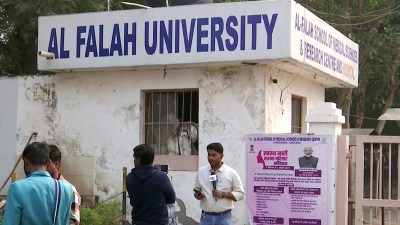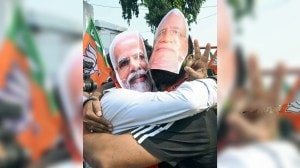‘Counter-magnet’ cities plan to pull crowd out of Delhi
Madhya Pradesh Chief Minister Digvijay Singh today launched a “counter-magnet” city project in Gwalior aimed at decongestion of Ne...

Madhya Pradesh Chief Minister Digvijay Singh today launched a “counter-magnet” city project in Gwalior aimed at decongestion of New Delhi. The Rs 60-crore Information and Technology City would start with assistance from the National Capital Region Board (NCRB).
Dedicating the counter-magnet city to late Madhavrao Scindia, Digvijay said political differences should not come in the way of development.
The other counter-magnet cities which the NCRB has identified are Kota in Rajasthan, Hissar in Haryana, Bareilly in Uttar Pradesh and Patiala in Punjab.
Speaking about how various agencies need to work together to implement such a plan, Digvijay said: ‘‘The Madhya Pradesh government is committed to late Madhavrao Scindia’s vision of development and assures full cooperation.’’
The city would be developed about 16 km from Gwalior near Tighra on 29,923 hectares. On the need for a project like this, he said: ‘‘The real problem is that no one wants to leave Delhi. So we want to first develop world-class infrastructure in the counter-magnet city here and then invite investors to take it up.’’
The infrastructure development plan would be implemented by the Special Area Development Authority and would include building roads, a 132/133 KV sub-station and telecom facilities. This part of the project, set to be completed by 2003, would cost Rs 60 crore.
He also announced exemption of stamp duty, entertainment tax and electricity tariff exemption for a limited time on the businesses that would be set in the new city. Jyotiraditya Scindia, who steered the project to the launch, said the state government was also considering a sales tax exemption for those investing in the city. He said: ‘‘My father had a dream of making Gwalior not only a hub for manufacturing but also for services. Because he always believed that both should go hand in hand for meaningful development.’’
‘‘Therefore, this city would not only look at IT but also IT-enabling services, health services, education, hospitality, biotechnology, research and development,’’ he said.
The state has the bandwidth availability of 20,000 km optic fibres already laid which has been a reason for the success of Gyandooth project, on the lines of which the state government is now planning Gyandeep. Both projects are for taking e-governance facilities to grassroots.
On the third such project for taking computers to schools and colleges, Gyanoday, he said: ‘‘We are ready to enter into an MoU with IT industry to take over our vocational institutes.”



- 01
- 02
- 03
- 04
- 05



























